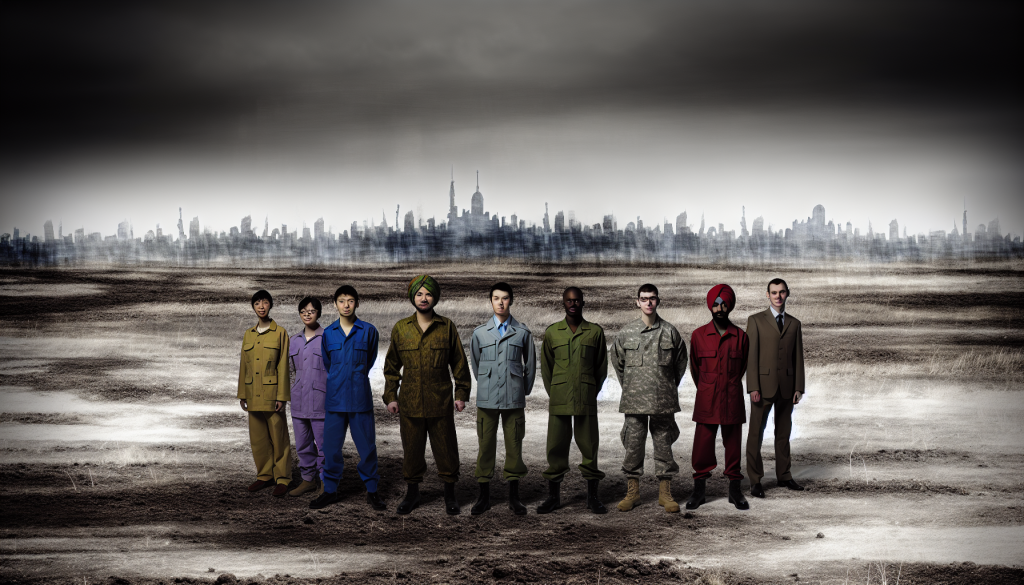The Journey of Jack de Santis: From Croatia to the Ukrainian Frontlines
Introduction
In the realm of modern warfare, the stories of individuals who rise to the occasion in times of crisis often remain hidden behind headlines and statistics. One such individual is Jack de Santis, a Croatian-born engineer and drone pilot who felt compelled to act amidst the turmoil unfolding in Ukraine. His journey—marked by sacrifice, dedication, and an unshakeable desire to aid those in peril—offers a unique perspective on both the broader conflict and personal resilience.
Early Life and Motivation
Jack de Santis was born in 1990, just as the Yugoslav Wars began to erupt in the Balkans. Growing up amidst such devastation shaped his outlook on conflict and survival. He recalls how, upon witnessing the full-scale invasion of Ukraine by Russia in February 2022, he couldn’t simply sit back and watch. The harrowing images of war brought back memories of his own childhood, as he recognized themes of loss and destruction that paralleled his early experiences.
“I didn’t want to just sit and watch it in the news and do nothing about it,” he reflected, underscoring the emotional pull that motivated his decision to act.
Transition from Engineer to Volunteer
Despite his fervent desire to assist, de Santis faced a significant barrier: he lacked military experience. Yet, his background as a computer hardware engineer proved invaluable. Skilled in drone technology, he had spent years perfecting his piloting and technical abilities, which ultimately positioned him to contribute meaningfully to the conflict in Ukraine.
His journey into active service began after months of research and networking. He engaged with Ukrainian military units and established rapport through social media, shipping equipment to those in need before even arriving in the country.
Arrival in Ukraine: A Surreal Experience
In September 2022, de Santis made his first trip to Ukraine. He was greeted by Major Egor Pershin, head of the Ukrainian White Ghost drone program, who had recognized de Santis’s earlier contributions. Upon arriving in Kyiv under the cloak of curfew, he was struck by the eerie stillness of a once-vibrant metropolis. “It was such a surreal scene,” he recalled.
Despite the air-raid sirens that frequently echoed through the stillness, he felt a profound sense of purpose and belonging amidst the chaos.
Facing War: Embracing Fear and Danger
Entering a warzone was not without its fears. De Santis admitted that uncertainty loomed large in the beginning. However, as he acclimatized to his surroundings and understood the mechanics of warfare, this fear transformed into a calculated awareness of the risks he faced.
He learned to discern between what was genuinely dangerous and what was not. “Having a little bit of fear is actually healthy,” he noted, as it kept him from making reckless decisions.
The Impact of War: Personal Sacrifices and Injuries
Throughout his time in Ukraine, de Santis encountered harrowing experiences that tested his resilience. He sustained a broken leg when debris fell on him during an attack, and another injury occurred when he fell from a half-destroyed building during an artillery attack. These incidents highlighted the physical toll of his decision to engage directly in such a perilous environment.
Despite these challenges, he pushed through, often expressing that the risk and danger were part of the journey he had chosen to undertake.
Forming Bonds: Meeting Daniel Burke
One of the pivotal relationships de Santis formed was with Daniel Burke, a former British paratrooper and leader of the Dark Angels unit. Their camaraderie blossomed as they both navigated the complexities of war alongside volunteers from various countries.
Burke’s tragic fate—believed to have resulted from a miscommunication within the ranks—served as a sobering reminder of the stakes involved. De Santis reflected on their time together and the lessons learned in friendship and loss.
Reflections on the Conflict
As the war persisted through years of agony and stalemates, de Santis came to experience what many would describe as the “wild West” of warfare. He noted how initial chaos eventually gave way to more structured forms of military engagement.
By 2025, with substantial casualties reported on both sides, the harsh realities of the conflict became evident. De Santis’s insights into the transformation of the military dynamics provided a compelling window into the evolution of modern warfare.
Final Thoughts: Continuing the Mission
Now, as he looks back on his experiences, de Santis is refocusing on using his skills to enhance electronic warfare capabilities, contributing to the broader military effort in innovative ways.
His journey, from a tech engineer to a frontline volunteer in Ukraine, embodies a fusion of individual agency and collective resilience in the face of adversity. Each story within this conflict reminds us that humanity often shines brightest in its darkest hour.

